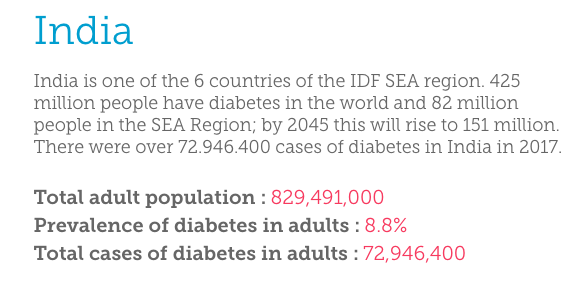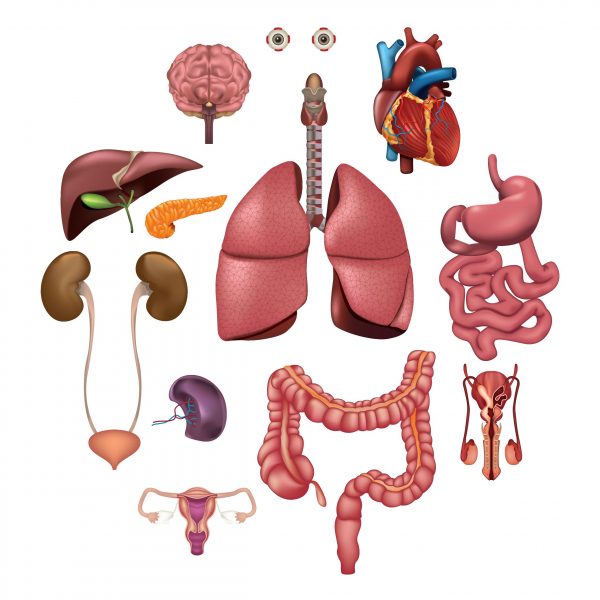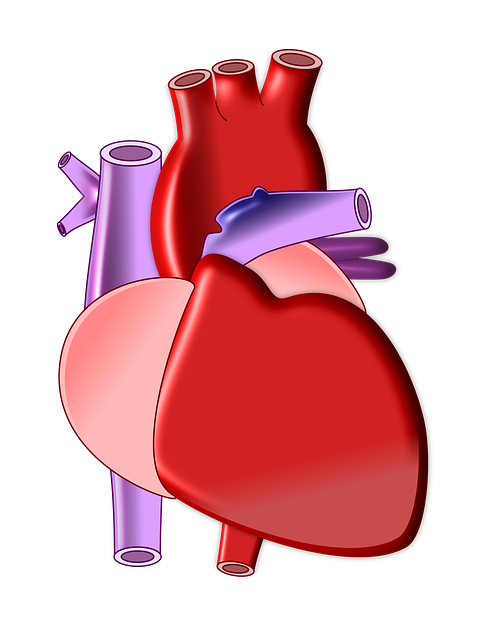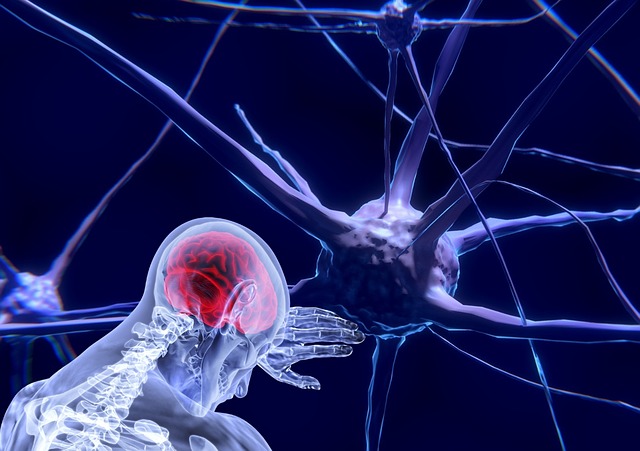All You Need to Know About Diabetes
India is looked on as diabetes capital of the world. Bitterly we stand at the second position in the world loaded with 98.2million adults carrying diabetes. India once served the first place which is now taken over by the china with 130 million of its population with diabetes.
As per the world health organization and international diabetic federations, the prevalence of diabetes is on average 8.7% as of now which was 7.1% a while ago amongst our adults. Factors like smoking tobacco and alcohol add 21%, physically inactive adults aging between eleven to seventeen years add 13%, and genetic factors sum up 9% to the onset of diabetes.
Compared between urban and rural areas, the former stands four times ahead. The northern States of India shows less prevalence contrast to the southern states. Kerala ranks first. Our capital Delhi as always take the first, lined up by fast-growing commercial cities like Mumbai, Bangalore, Chennai, and Hyderabad.
The Kashmir has 6% of its people affected by diabetes whereas southern cities like Bangalore has 12.4%, Hyderabad 16.6%, Mumbai 9.3%, Kolkata 11.7%, and Chandigarh has 0.12% only. Tamil Nadu is the second highly prone state with Punjab at the third.
On average, a typical diabetic spends Rs 30,000 to 75,000 INR for regular diabetic care inclusive of lab tests, consultation, and medications for a year. 60% of the income of an uninsured patient goes into it. The insulin need may not be meted by almost half of diabetics in the coming years. The estimated count of diabetics is predicted to be 150 million by 2035.

image source: international diabetes federation
The urbanization, vast changes in the lifestyles, the globalized food habits, energy foods, no physical work, nutrients less diet, procrastinated metabolism, genetic factors, obesity, diet supplements, hectic schedules, unawareness of the symptoms are the crucial reasons for the spread of diabetes.
Diabetes typically said as SUGAR in many parts of the country justifies its name.
The increased sugar levels in the blood are simply diabetes. Our body is organized with a team of organs to function distinctly. The glucose levels of our blood are balanced by the insulin levels naturally produced by the pancreas. The conflict arises when the pancreas stops or cannot create a sufficient supply of insulin. The levels of glucose in the blood go up drastically causing chronic malfunctions.
Though the reasons may be autoimmune disorders as in type 1 diabetes or acquired by external and genetic factors in type 2 diabetes. Type one notable among the children and adolescents while the age of 18 to 42years face diabetes Mellitus otherwise called as type two diabetes.
Irrespective of the reasons, our body depends on the insulin intake from medications and the pumps. Strict ways for lowering the blood sugar levels through diet, exercise, and monitoring should be followed along. No matter how accessible the medications are, they may run out of deposits or become expensive for a common man. The deaths due to diabetes were told as 1.6million in 2016 which may have increased and may also reach heights further. The complications are not just the undetermined sugar levels but also diabetic neuropathy, knee pains, a cardiac, gastric issue which never leaves making life stressful.
A diabetic should be fully aware of the causes, things to do and not do, food, travel care, stress levels, side effects, severities of the problem.
A healthy lifestyle, changes in food habits, low impactful workouts, regular medications, diabetic preventive care if the family shows the history of diabetes, being well known of the treatments and consequences is an absolute need.
Health Burdens of Diabetes:

Most people in India have a smart perception of a few complications rooted deeply by diabetes. Apart from the well known excessive urination, high blood pressure and delayed wound healings, there is still a horde of problems led by it.
Kidneys and Pancreas:


The primary platform for diabetes to lay its first stone on is the ineffectiveness of pancreas. The pancreas produces the insulin needs of the body.
When that draws to a close or ceases the insulin deposits, diabetes arise.
The troubled kidneys and pancreas create fatigue and tiredness in the body, which exhausted diabetic persons frequently.
Kidneys malfunctioning or inability to filter lets down a great loss of proteins through urine from the body.
Excessive and frequent call for urination is the established symptom known to all of us.
A typical diabetic urinates 6 to 9 times on an average per day. This happens as the excess sugars and fluids creep out through the urine.
Cardiovascular issues:
Heart, the vital organ for our survival is not an exceptional sufferer.
A diabetic patient has a 3time higher chance to be hit by a cardiac stroke than a normal individual.
The high blood pressure creates stress on the blood vessels and the blood pumping of the heart risking cardiac disorders.
The high sugar levels in the blood thicken the walls of the blood vessels and arteries lowering the blood flow to the extremities of the body.
The diabetics are commonly accompanied by obesity and abnormal cholesterol levels that are rich factors for heart diseases.
Nervous disorders:

Autonomic, sensory and motor systems constitute our brain. A brain wholly utilizes these three streams to altogether carry out the functions of our body. Diabetes stunts the nervous functions by affecting these areas individually or collectively.
Numbness or senselessness of the limbs, hypersensitivity to the cold or hot conditions are seen.
The posture imbalances leading to uncontrolled falls, and fear of standing, lack of perception of touch, coordination, and body balance problems.
The risks of unnoticed injuries, helplessness, and delay in blood clotting are serious difficulties in diabetics.
Troubles to the eyes:

The eye has always been a sensitive organ inclined to large issues contrary to its size.
As the optic nerves and blood vessels supply to the eyes is troubled in fluctuated sugar levels, they develop vision disturbances.
The damaged blood flow causes blurred vision, which is the inability to see, can also be said as sight differences.
A diabetic person is largely susceptible to cataracts and glaucoma rather than others.
Dental problems:

Periodontal issues of the teeth, unstoppable bleeding from the gum tissues, regression of the infections and a hindrance to the dental treatments are the results of high blood sugar levels. A dentist needs to control the sugar levels to treat a tooth.
Hearing fluctuations:

Wondering why does a diabetic face a loss in hearing?
The blood vessels that supply to the ears are also accumulated with high sugars. The auditory nerves that support nervous coordination of ear are damaged. This leads to the loss of hearing ability.
Gastroparesis and Stomach:
![]()
Diabetics are commonly witnessed with a gastroparesis diet. It’s a condition in which the food doesn’t empty from the stomach.
A severe stomach ache is noticed for various reasons.
It gives rise to bloating, nausea, tiredness, vomitings, the fullness of stomach, no appetite are noticed. A diet correction is the other way of controlling the situation along with a long medication.
Diabetic Ketoacidosis:

Though rare amongst the other complications in our country, ketoacidosis a major issue to be aware of.
Our body produces a lot of acidic ketone deposits instead of insulin. This condition is spoken as ketoacidosis.
Your breath smells sweet, burning sensation in belly, tiredness, and chaos, breathlessness occurs. It comes to control in hours if medicated.
Diabetic Neuropathy:

The diabetic foot, knee pains, leg care are all the words that we use to describe the neuropathy. It is the chronic case which is aggravated in the nights.
Feet and legs to hands are cumulatively affected.
Tingling, pain like pinning with needles, posture imbalance, numbness in the limbs, cramps all over, foot ulcers, unyielding infections, knee pains, burning of soles, muscle pains are prominent.
The foot ulcers and blisters deepen their infection forming the dangerous necrosis and gangrene.
The soft tissue gets necrotized, the gangrene increases the amount of dead tissue.
This ends up in amputating the limbs on the worst note.
Delayed wound healing and blood clotting:

The wounds or cuts in a diabetic person refuse to heal soon. The process involved in the healing is disturbed by the higher glucose levels.
The immune system and the cells responsible for the blockage of infections is affected by the poor nervous functioning.
Cells and tissues being deprived of the sufficient blood flow can’t repair the cuts.
The blood clotting factors, the platelets, the blood needed is not provided by the body in the required scale leading to unstoppable bleeding. This is even unnoticed due to numbness in some diabetics.
Problems In women:

In addition to all those troubles of diabetes in adults, women face some intimate issues.
Yeast infections in vagina and mouth, oscillations in weight gain and loss, Polycystic ovarian syndrome, sexual dysfunction, lack of orgasms, nausea are regularly demonstrated.
Others:
High blood pressure due to narrowed blood vessels, obesity, and genetic reasons.
Skin shows diseases, dryness, cracked conditions. Some diabetics experience sores, open cuts, blisters when neglecting the diet and increased glucose levels.
Excessive thirst and inability to concentrate, fear of standing or walking, excessive sleep and weight gain are not to be neglected.

9 thoughts on “All You Need to Know About Diabetes”